Organizations receiving federal funds are subject to the procurement guidelines of the Uniform Guidance (UG), 2 C.F.R 200 Uniform Administrative Requirements, Cost Principles, and Audit Requirements for Federal Awards. In 2018, the UG was updated by the Office of Management and Budget to increase thresholds for both the simplified acquisition costs and micro purchases. Each agency may have their own requirements or guidelines for specific grants and cooperative agreements. The conditions in existing cooperative agreements do not change, as in check your cooperative agreement when procuring goods or services. Often when a solicitation is issued the information may be requested from the agency if it is not outlined in the guidance documents.
Federal procurement regulations include guidance for the following:
- Micro-Purchases: For reasonably priced purchases under $10,000, formal solicitations are not required.
- Small Purchases: The limit for small purchases is $250,000. Your written procurement procedures should define what is adequate in selecting a contractor/vendor. A good rule of thumb is to obtain at least three quotes from qualified sources. No cost or price analysis is required for purchases under the acquisition limit.
- Large Purchases: The limit for large purchases has been raised to contracts in excess of $250,000. This requires a competitive solicitation process that is publicly advertised, there are three options for this type of procurement:
- Sealed Bid: Used in construction projects, such as a firm fixed price contract. Price is a major factor and a formal process for bidding is required.
- Competitive Proposal: Uses contracts such as fixed price or cost reimbursement. Formal Request for Proposal (RFP) with pre-determined evaluation methods for an adequate number of qualified sources.
- Sole Source: Sometimes because of the uniqueness of the goods or services or the immediacy of the need, competition is NOT as open in the procurement process. If these cases, the sole-source method must be followed. This non-competitive method is available for procurements of any dollar amount and it must be authorized by the agency (or Pass-through entity-for sub-recipients).
Here are some helpful tips to ensure that your organization is in compliance with procurement standards:
- Develop and/or formalize your internal procurement policy, and state that it is written to comply with the requirements of the Uniform Guidance.
- Outline standards relating to conflicts of interest.
- Select vendors carefully. One helpful tool in checking consultant and contractor records are state and federal debarment list.
- Maintain records sufficient to detail the history of procurement including the rationale for the method of procurement, contractor selection, and price considerations. Your funder may request procurement documentation.
- All procurement must be conducted in a manner providing full and open competition consistent with federal requirements.
- Organizations must take steps to use minority or women owned business when possible.


